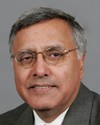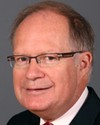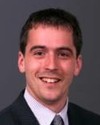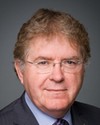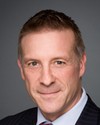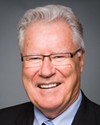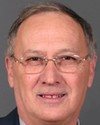Thank you, Mr. Chair.
General Lessard is the current commander of the Canadian Expeditionary Force Command, so is responsible for all operations internationally. Major-General Mark McQuillan is the commander of Canadian Operational Support Command, providing general support, again, to all operations around the globe, and here in Canada, whether it be for the Olympics or up to the Arctic.
Chair and members of the committee, thank you for your interest in and your support for the Canadian Forces.
We're going through an extraordinary time right now. Each and every day, we're engaged in operations protecting Canada and Canadian interests around the world. At the same time, we're keeping Canadians safe here at home each and every day.
For the men and women in uniform, we appreciate your interest, especially at this time of the year as we remember our loved ones near and far, and we appreciate that ultimately you have our interests in mind.
This is my first solo opportunity to address the committee in my capacity as Chief of the Defence Staff. I've been here twice before, with General Bismillah Khan, and indeed with the minister last week. I'd like to use a bit of my time to talk about our mission in Afghanistan and what we're doing right now. I want to paint a picture for you to help you understand the missions, the tasks, and what we've accomplished.
Context is so important when we talk about Afghanistan. We have about 18 months left in the Parliamentary mandate for the Canadian Forces mission in Afghanistan. The Government of Canada has given the Canadian Forces clear instructions. Our military mission in Kandahar will end by July 2011. The Canadian Forces will have completely withdrawn from Kandahar by December of 2011.
The relief in place by our allies, and the withdrawal from a combat zone of a sizable contingent of personnel and all their equipment, is a significant task. We need to carry it out in a very organized and sequenced manner. Indeed, this is the largest redeployment of troops, materiel, and equipment from an active theatre of operations that the Canadian Forces has conducted since the Korean War.
For the Canadian Forces to meet the direction of the Government of Canada to be out of Kandahar by December 2011, we need to begin our planning right now. That's why I issued the order in August of this year. However, before we get into the magnitude of the task, let me tell you about what's going on in Afghanistan.
Mr. Chair and members, I'm really proud of the job that our soldiers, sailors, airmen, and airwomen are doing today in Afghanistan. At the Afghan government's invitation and under the United Nations Security Council mandate, Canada, its NATO allies, and our ISAF partners are enhancing security in the midst of a region that has been locked in conflict for 30 years.
We're enabling the Afghans to take ownership of their country. We are building the capacity of the Afghan government to better serve its citizens, to allow them to exercise a sovereignty that they have been denied for so long, and enabling the Afghan government to bring security and prosperity to its own people.
Our mission is focused on protecting Afghans where they live, building the capabilities that Afghans need to democratically govern their country, and providing hope for a better future. The Canadian Forces are, as you know, playing an essential role in enabling all of these efforts.
We are providing the protection that is fundamental to building a secure environment in which governance, humanitarian aid, development, and the training of the military and the police can occur. Our men and women in uniform, with world-class equipment--again, our allies are envious of the equipment we have--are able to provide the protection to enable the whole-of-government comprehensive effort to advance nation-building.
But it's also about partnering with the Afghans, because we know it's their country. Our focus has been on training the Afghan army. The progress they've made is truly impressive.
I reflect on this every time I go back to Afghanistan. I think about my first visit in 2006. I was at Masum Ghar overlooking where Operation Medusa had occurred. At that time, we had a single battalion on the ground in the midst of a growing insurgency. I think about Labour Day weekend in 2006, when our Canadian Forces, that battalion on the ground, faced massed Taliban troops dug in across the Arghandab River. The Canadian Forces at the time launched Operation Medusa, many weeks of pitched combat against the Taliban, who believed that they could capture Kandahar City.
As we were told by the Afghan government of the day and our allies, “as goes Kandahar, so goes Afghanistan”. And they, and indeed the Taliban, were wrong. In support of the new NATO mandate, the Canadian Forces won the day. It was a turning point in the conflict, a very positive turning point. But I reflect upon that time in 2006. There were very few Afghan army members with us. And there were virtually no Afghan police around with us.
When I visited this past September, I stood at the same location, Masum Ghar, and I looked at an Afghan army battalion of 400 there in location. And indeed, throughout the entire area of operation, there are more than 3,000 Afghan National Army soldiers working alongside your Canadian Forces. We're talking about a full brigade of six battalions of soldiers and a very capable brigade headquarters. In addition, we have about 700 Afghan police officers working in concert with our troops and receiving training from the Royal Canadian Mounted Police.
We recognize, however, that the Afghan National Security Forces' capabilities are growing slowly. They are growing slowly but they are growing in a positive direction, and that is stronger. And their leadership role in operations is increasingly evident. They're now planning, executing, and leading their own operations in the field. The Afghan National Security Forces are enabling security alongside your men and women and helping to build a more secure environment.
The effect is that the non-governmental organizations, the international organizations, and Afghan ministries, such as their health ministry, their educational ministry, and the agriculture ministry, are able to access regions and permit development work to occur. It's all about building hope. It's about creating jobs. It's about allowing for education for the kids and medical care for everyone.
The progress being made in Afghanistan is a source of pride to our soldiers, sailors, and airmen and women. They keep telling me how proud they are of what they're accomplishing as part of this mission and how proud their Afghan comrades are of the role they are playing in building and protecting their nation. Some of our soldiers are back on their second, third, and even fourth tour because they want to be there and they can see a difference.
Our NATO allies and ISAF partners as well as the Government of Afghanistan and the citizens have all expressed appreciation and gratitude for the outstanding professionalism and indeed the sacrifices Canada continues to make in Afghanistan. We are respected and recognized as a leader in security and reconstruction operations in southern Afghanistan. And we continue to make inroads and seek ways to be more effective on the ground. Our U.S. allies have demonstrated an enhanced level of confidence in the Canadian Forces' capabilities and our leadership, and they have taken the rare step of placing three United States battalions under Canadian tactical command.
It's already clear that the U.S. troop reinforcements that arrived this past spring have made a significant difference to the mission. They've allowed our troops to reposition the forces in such a way that the vast majority of our forces are providing direct security support to the Afghan population. This is a fundamental change in our approach for this mission. For close to three years we didn't have sufficient troops on the ground to secure the region. And you'll recall the government's appeals for our NATO partners to help us in the south.
So we'd been operating with one Canadian battalion and one Afghan brigade. But what would occur is that we'd clear an area, but the Afghan security forces did not have the capacity, did not have the capability to hold the ground we took. And we'd have to adjust to the next area that needed assistance.
That approach has changed, again thanks to the United States and also thanks to our other NATO partners. They responded to the appeal and the appeal from the independent panel of government. Indeed, one former commander of ISAF called the first battalion that arrived—22 Infantry, and now 112 Infantry—the “Manley battalion”. But that battalion arrived. And since then, things have changed again.
Now we have four battalions operating in the vicinity of Kandahar City: one Canadian battalion, the 1st Battalion, PPCLI; and three American battalions. Furthermore, there is an additional full American brigade covering the outlying areas around the Kandahar City region out to the borders. It's providing security to the other parts of the province outside of Canada's areas of operations. And the Afghan brigade has grown by an additional battalion, and it has enhanced competency since this past summer.
All of that combines to let us focus on creating the protective region around Kandahar, which I spoke about, creating the secure environment that allows development to occur, governance to take place, and more importantly, governance to take root.
Greater troop density in the Kandahar region has meant that the capability provides a more persistent security presence for the Afghans. It brings security more directly to where people are trying to conduct their daily lives: that is, farming--and this is truly the breadbasket of Afghanistan along the Arghandab River--getting to work, and going to school. It's supporting the Canadian and Afghan efforts to shift focus from disrupting an insurgency in the countryside to focused security on where the people live.
We're protecting the populations in villages and districts, clearing the communities of the insurgent elements, and holding our positions to protect the villagers. Therefore, CIDA and its development partners have the security they need to get going and deliver effect—jobs, education, medical care, and agricultural assistance—and to really make a difference in people's lives.
We call this using a village-based approach; that is, building security at a community level and making the insurgency less relevant to the population. The Taliban's aim is to provide alternate governance. If we're there they can't do it, so platoons of our soldiers are living in the towns they've liberated from the Taliban. This is key to defeating the Taliban.
Things are changing slowly. I believe the next surge of additional U.S. troops that will come in 2010 will see things continuing to shift, and in about a year and a half indeed the context may shift. As our mission comes to a close, we'll be looking at a very different Afghanistan. But right now our people are focused on next week, next month, and next year. We're focused on the 18 months we have to serve on this mission. Our people want to make a contribution to peace and security in Afghanistan.
However, as I said, we have clear direction from the government's motion. Planning for the redeployment of the Canadian Forces troops out of Kandahar has begun so it can be completed on the schedule the government has laid out for us. While planning a relief in place by our allies moves ahead, we will remain focused on the mission at hand. We fully intend to fulfill our NATO- and our UN-mandated responsibilities until 2011. I expect that we will run through the ribbon that marks the finish line of our mission in July 2011.
The Canadian Forces will continue to contribute to the whole-of-government mission that relies on a stable security environment. We will continue to support the capacity-building within the Afghan National Security Forces. We will continue to demonstrate Canadian leadership within ISAF. Our goal is for a seamless transition of the Kandahar region to our allies that will allow our partners from other government departments, NATO, and ISAF to continue to work together to build on the progress that has been made to date.
Part of that seamless transition is ensuring that our troops and those of our partners and allies are as safe as they can be as we undertake a relief in place. And part of it is maintaining Canadian leadership, honouring the Canadian Forces' service, our contributions, the sacrifice, and indeed the Canadian reputation for excellence.
Mr. Chair, the logistics of the drawdown are daunting. We have a wide variety of equipment in Afghanistan: ammunition, spare parts, materiel, kitchens, medical facilities, weapons, and so on. We have more than 1,200 vehicles there. We have several thousand sea containers full of all the things that make the Canadian Forces one of the best forces in the world and allow us to perform the tasks that government has outlined for us in a safe and effective manner.
So the withdrawal of the Canadian Forces from Afghanistan will be a demanding task, and I'll be relying on these two leaders beside me, these two gentlemen, General Marc Lessard and General Mark McQuillan, and their teams and their headquarters to lead in these efforts. Planning for us is routine. We plan all the time. But it's absolutely necessary, because what we don't want to do is provide surprise.
Mr. Chair, as we speak, a reconnaissance team is already in Afghanistan. They're starting at the 2011 point and they're working backwards, reverse engineering all the complex issues and carefully sequenced steps that will need to be put in place to get from here to there. They will need to consider how to coordinate the return of Canadian Forces matériel and all of our equipment to Canada. They'll need to determine what we will need to dispose of--equipment that has met its full life--and if we sell it or donate it to the Afghans or to our allies. They'll need to weigh the various options available to get the often expensive and not necessarily easily moved equipment home and they'll need to prioritize what needs to move and when, to ensure that our military maintains the capability to respond to the full spectrum of operations until our commitment is finished.
We've made commitments to fulfill our responsibilities to our partners--CIDA, Foreign Affairs, Correctional Service of Canada, the RCMP--who rely on us for their protection as well as their basic support needs, such as food, water, and accommodations. We also have a responsibility to our allies and other partners.
So I have great leaders focused on the logistics of what happens when. At the same time, I'm focused on the people we have in Afghanistan right now: the 1st Battalion, PPCLI, the Royal Canadian Horse Artillery, the Lord Strathcona's Horse, the Royal Canadian Dragoons, the engineers, the service battalion, and the medical staff; there are the elements that make up the air wing, such as the helicopters, transport aircraft, and unmanned aerial vehicles; and indeed, we have support from reservists from across the country who have put their civilian lives on hold to serve Canada.
I'm concentrating on coordinating our work with the Department of Foreign Affairs, the RCMP, and CIDA to maximize our efforts and the impact every day in support of Government of Canada objectives. I'm looking for progress today, next week, next month, and next year.
Mr. Chair, my responsibility is to lead the Canadian Forces, to ensure I provide the Government of Canada with defence options to secure Canada and Canadians, and to ensure our military has the capabilities and capacity to act in the full spectrum of operations. I always have to be ready for tomorrow. I must always keep in mind future force posture.
I still remember, just over a decade ago, coming home from Bosnia and starting a job here in Ottawa. The first day on the job, I got the keys to my office, March 23,1999. I walked into my office and sat down and my predecessor said, “ Walt, it's going to be a quiet day, you can just relax. You've just been to Bosnia, that's the main effort, everything's fine.” I turned the television on to a news channel and there I saw Canadian Forces CF-18s that had just been given a mission to drop bombs in Kosovo. I had no idea at that moment of what we were about to get into. So you constantly have to be ready for tomorrow.
That's why we have to be ready to respond to any security challenge that the Government of Canada assigns to the Canadian Forces. I think you should be very proud of the professional and highly trained and disciplined force that you have. We who wear the uniform want to go places and do things. That's why they join the Canadian Forces. But they also want to represent Canada in providing peace and security around the world.
As I talk to our soldiers, I say the peace and security of Canada begins 10,000 kilometres away, whether that be in places like Italy, where our veterans just celebrated the battle of Ortona from 65 years ago, or in places like Korea, or indeed Bosnia, or indeed Afghanistan.
We maintain our edge, because whether it's an ice storm or a flooded home or a conflict on the other side of the world, we must be ready to respond. That's the process we continue with in Afghanistan today so that we're ready to respond effectively tomorrow.
Monsieur le président, merci beaucoup.


